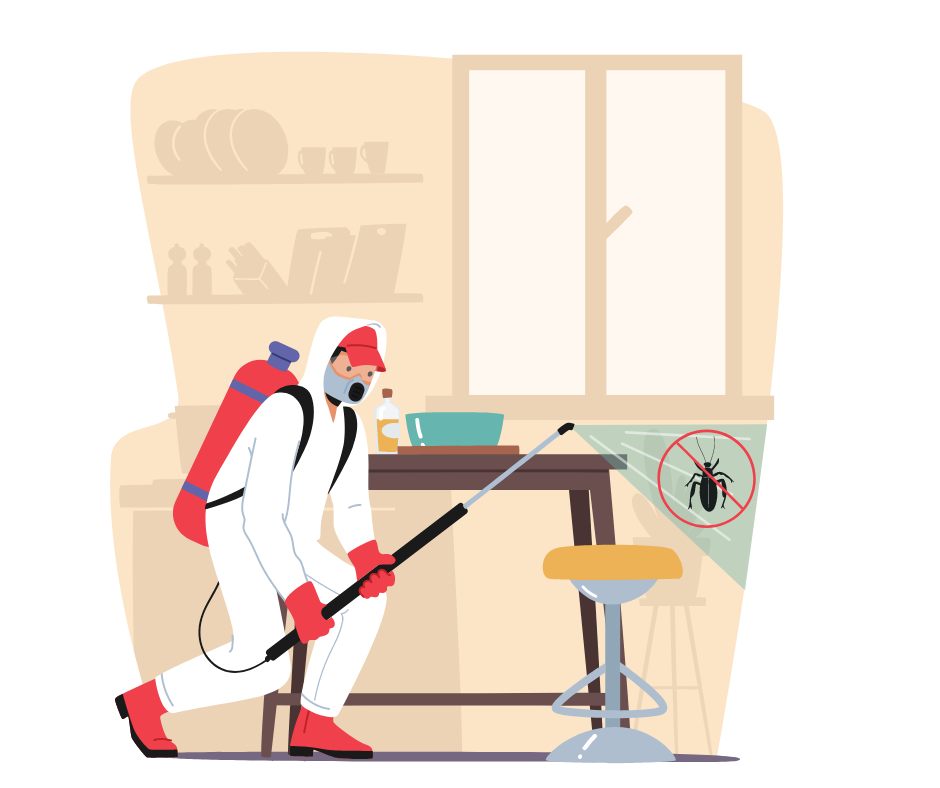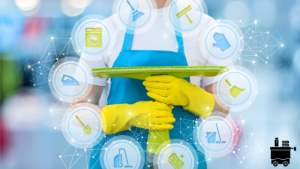Integrated Pest Management: A Holistic Approach to Sustainable Pest Control Solutions
3 min readIn the realm of agriculture, landscaping, and public health, managing pests is a constant challenge. Traditionally, the use of chemical pesticides has been the go-to solution for controlling pests. However, concerns about environmental impact, human health risks, and the development of pesticide-resistant pests have led to a shift towards more sustainable pest control practices. Integrated Pest Management (IPM) has emerged as a holistic approach that aims to effectively manage pests while minimizing reliance on chemical pesticides. Let’s explore the principles of IPM and its role in promoting sustainable pest control solutions.

Understanding Integrated Pest Management (IPM)
Integrated Pest Management (IPM) is a comprehensive approach to pest management that combines multiple strategies to prevent, monitor, and control pests while minimizing environmental impact and economic costs. Unlike conventional pest control methods that rely heavily on chemical pesticides, IPM emphasizes the use of non-chemical techniques, such as biological control, cultural practices, and habitat modification, to manage pest populations effectively.
Key Principles of IPM
- Prevention: The first step in IPM is to prevent pest infestations before they occur. This may involve implementing preventive measures such as crop rotation, sanitation practices, and exclusion methods to minimize pest access to food, water, and shelter.
- Monitoring and Identification: Regular monitoring of pest populations is essential for early detection and accurate identification of pest species. By monitoring pest activity, IPM practitioners can assess population levels, identify pest hotspots, and determine the most appropriate control measures.
- Threshold Determination: IPM relies on the establishment of action thresholds, or acceptable levels of pest presence, beyond which control measures are necessary. By setting threshold levels based on economic, ecological, and health considerations, IPM practitioners can make informed decisions about when and how to intervene.
- Non-Chemical Control Methods: IPM emphasizes the use of non-chemical control methods, such as biological control, cultural practices, and mechanical control, to manage pest populations. These methods aim to disrupt pest breeding cycles, reduce pest habitat, and promote natural pest predators and competitors.
- Targeted Pesticide Use: While chemical pesticides are sometimes necessary in IPM programs, their use is minimized and targeted to specific pests and problem areas. Integrated Pest Management practitioners select pesticides that are effective against the target pest while minimizing risks to non-target organisms and the environment.
https://hsseworld.com/pesticides-fumigants-exposure
Benefits of IPM
- Reduced Environmental Impact: By minimizing reliance on chemical pesticides, IPM reduces the environmental impact associated with conventional pest control methods, such as water and air pollution, pesticide drift, and harm to non-target organisms.
- Protection of Beneficial Organisms: IPM practices protect beneficial organisms, such as pollinators, natural predators, and soil microbes, which play vital roles in ecosystem health and agricultural productivity.
- Cost Savings: While initial implementation costs may be higher for IPM compared to conventional pest control methods, IPM can lead to long-term cost savings by reducing the need for chemical pesticides, minimizing crop damage, and improving overall pest management effectiveness.
- Resilience to Pesticide Resistance: By incorporating multiple control strategies, including non-chemical methods, IPM helps mitigate the development of pesticide-resistant pests, ensuring long-term effectiveness of pest control measures.
Implementing IPM Practices
Implementing IPM practices requires collaboration among farmers, landscapers, pest management professionals, and policymakers. Education and training play a crucial role in promoting awareness and adoption of IPM principles among stakeholders. Government agencies, universities, and non-profit organizations often provide resources, technical assistance, and certification programs to support the adoption of IPM practices.
Conclusion
Integrated Pest Management (IPM) like Elite Pest and Termite Control, LLC offers a holistic approach to pest control that emphasizes prevention, monitoring, and the use of multiple control strategies to manage pests effectively while minimizing environmental impact and economic costs. By integrating non-chemical control methods, setting action thresholds, and minimizing reliance on chemical pesticides, IPM promotes sustainable pest management practices that protect human health, safeguard the environment, and support long-term agricultural productivity. As awareness of environmental sustainability grows, the adoption of IPM practices is expected to continue to increase, driving positive outcomes for ecosystems, communities, and future generations.
E-Books: PPE for Chemical, Biological, and Radiological Hazards free
for wellness and health guidance visit https://wellnessguidanceonline.com/



